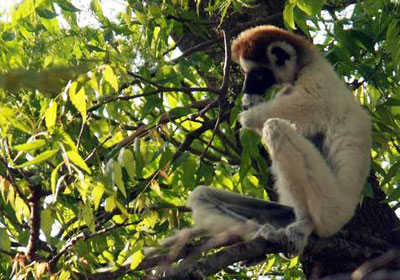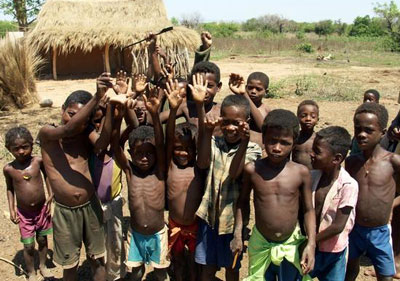Adaptation to climate change will be difficult for Madagascar
Adaptation to climate change will be difficult for Madagascar
mongabay.com
July 29, 2008
|
|
Madagascar’s high levels of endemism coupled with its extensive loss and degradation of ecosystems leave its species particularly vulnerable to climate change. A new paper evaluates these risks and sets forth conservation priorities to best maintain the ecological resilience of the island nation.
Although Madagascar has lost about 90 percent of its natural forest cover, more than 90 percent of its plants, mammals, reptiles and amphibians are unique to the island, making it a top global biodiversity hotspot. Nevertheless climate change is projected to have a big impact on the island. Models suggest that Madagascar will lose 17-50 percent of its remaining forest habitat due to climate change if plants are unable to disperse or migrate to suitable areas. The outcome could prove devastating for flora and fauna.
A new paper, published in Biology Letters, make three recommendations that could help Madagascar’s biodiversity adapt to climate change: (1) restoration and protection of riverine corridor forests important for migration; (2) maintenance and restoration of connectivity among fragmented forests, especially in regions with high genetic divergence between populations across major riverine corridors; and (3) management of all remaining natural forest to maximize the potential for species migration in response to climate change. The authors, led by Lee Hannah of Conservational International, note that riverine corridors and forest fragments can serve as key migration paths and refugia for species.
 Sifaka lemur in Madagascar. Photo by Rhett Butler. |
Hannah and colleagues say the proposal is a costly one. They estimate the cost of establishing plantations to meet fuel and wood needs for communities on an area of equivalent of one quarter of Madagascar’s natural forest outside protected zones at $400 million ($360 per hectare). Meanwhile restoring connectivity to an equivalent area of fragmented forest lands would add another $800 million in costs ($850 per ha). Protection and restoration of riverine corridors would add still further costs.
Some of these costs may be met by the emergence of ecosystem services markets, notably the Reducing Emissions from Deforestation and Degradation (REDD) initiative proposed by the U.N. Such a scheme, which is based on the granting of carbon credits to tropical countries for protecting their forests, could net Madagascar $72-144 million per year with $9 million in annual investment by some estimates. Nevertheless the authors seem to suggest that adaptation will be difficult in a poor country like Madagascar.
 Children in Madagascar. Photo by Rhett Butler. |
“The likely impacts of changing climate in Madagascar dictate a second set of responses, not developed here,” the write. “Human adaptation to climate change will also take place (migration, altered agricultural practices), compounding human hardship and creating additional threats to biodiversity that must in turn be factored into conservation strategies. Where management to maintain biological response capacity conflicts with community use of resources, alternatives will have to be found. Madagascar’s widespread poverty makes it imperative to integrate human well-being into conservation planning, and efforts to deal with climate change are no exception.”